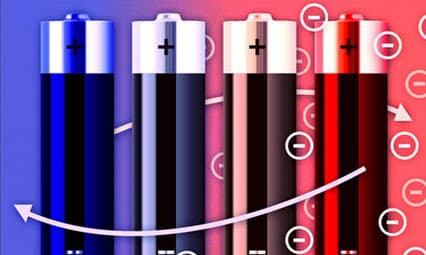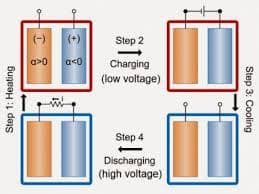Converting Waste Heat Into Electricity Possible - MIT & Stanford Research
The most common product out of industrial processes is waste heat. Researchers have been trying to harness this energy, which is usually wasted. Efforts to utilize this heat have centred around thermoelectric devices (like <a href="https://www.crazyengineers.com/threads/conversion-of-waste-heat-to-energy-can-revolutionize-photovoltaic-cells.74142">Conversion of Waste Heat to Energy Can Revolutionize Photovoltaic Cells</a> one), solid-state materials that can produce electricity from a temperature gradient. However, their efficiency has been limited by the availability of materials. The temperature gradient required for these devices in order to work was about 500 degrees Celsius. But researchers at MIT and Stanford University have found a new alternative for low-temperature waste-heat conversion into electricity — that is, in cases where temperature differences are less than 100 degrees Celsius.

Rechargeable batteries are used to store the electricity generated. The battery is first heated using the waste heat. At higher temperature, the battery is now charged. The charging voltage is lower at high temperatures than at low temperatures. The battery is then allowed to cool down. Now at lower temperature, the battery delivers more voltage than that was required to charge it. Of course, this extra energy comes from the heat that was added to the system. At 60 degrees Celsius temperature gradient, the batteries demonstrated an efficiency of 5.7%.

Enormous amounts of low grade heat is released in industrial processes and nearly one-third of the total heat generated in the US ends up as low grade heat. This new prospect of conversion of that heat into electricity is low on cost and requires no significant changes in the way industrial processes are. Also, no change is required in the way rechargeable batteries are manufactured.
Source: #-Link-Snipped-#

Rechargeable batteries are used to store the electricity generated. The battery is first heated using the waste heat. At higher temperature, the battery is now charged. The charging voltage is lower at high temperatures than at low temperatures. The battery is then allowed to cool down. Now at lower temperature, the battery delivers more voltage than that was required to charge it. Of course, this extra energy comes from the heat that was added to the system. At 60 degrees Celsius temperature gradient, the batteries demonstrated an efficiency of 5.7%.

Enormous amounts of low grade heat is released in industrial processes and nearly one-third of the total heat generated in the US ends up as low grade heat. This new prospect of conversion of that heat into electricity is low on cost and requires no significant changes in the way industrial processes are. Also, no change is required in the way rechargeable batteries are manufactured.
Low grade heat being almost omnipresent, the technology may be instrumental in identifying new processes that convert waste energy to useful forms.Source: #-Link-Snipped-#
0
